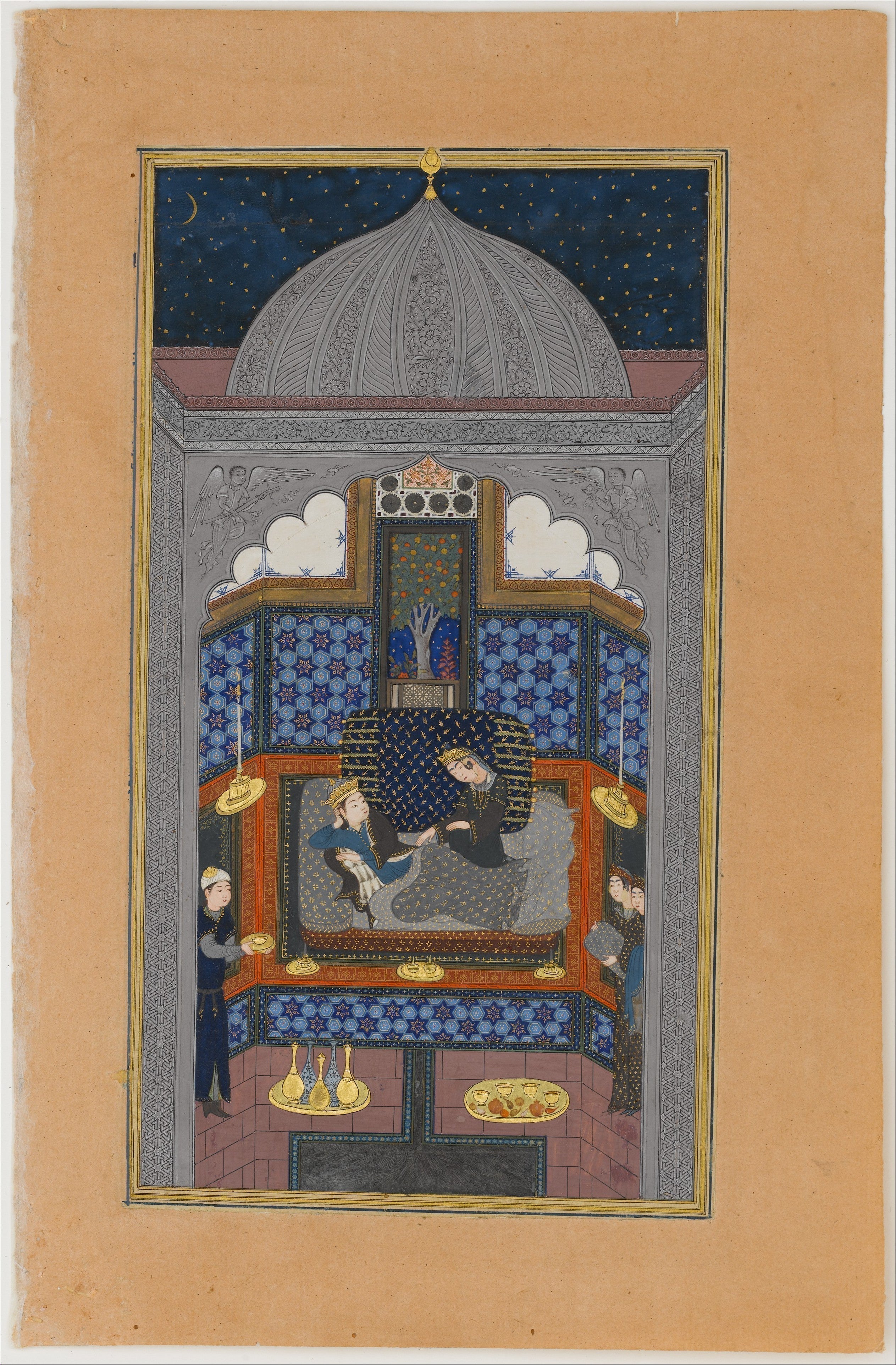Article: Nizami’s Haft Peykar – The Seven Beauties – A Journey from Darkness to Light

Nizami’s Haft Peykar – The Seven Beauties – A Journey from Darkness to Light
Nizami
The Haft Peykar, translated as The Seven Beauties, is one of five epic poems written in the 12th century by Persian poet, Nizami Ganjavi (c. 1141 - 1209). The five poems form a collection called the Khamsa, or Quintet.
The Haft Peykar has been copied numerous times across the centuries, in opulent, gold-illuminated folios, with miniature paintings and Persian calligraphy. Many of these luxurious pieces now sit in museums, royal libraries and private collections.
Nizami lived in the city of Ganja, in present-day Azerbaijan, during a time of great cultural and intellectual flourishing across the Islamic world. Nizami’s stories are a meditation on beauty, love and ethics, combining storytelling traditions with classical philosophy and Islamic ethics.
The story focuses on Bahram Guhr, a Sassanian king, who journeys through seven differently coloured domes, each inhabited by a princess from a distant land. Each princess tells Bahram Gur a tale with philosophical and ethical dimensions. As he moves from dome to dome, he journeys deeper into his inner consciousness.
The Black Dome

'Bahram Gur in the Dark Palace on Saturday'. Date 1524-25. Author Nizami, Painter Shaikh Zada, Calligrapher Mahmud Muzahib. Folio held at the Metropolitan Museum of Art, New York.
The folio above shows Bahram Gur and the Indian princess in the Black dome, the first of the seven domes and the beginning of his journey. Lying on a sumptuous daybed, surrounded by servants bringing wine, the dome is filled with striking colours and patterns, while still conveying a sense of darkness. The dome is described as richly adorned, yet immersed in darkness, a symbol of the unconscious.
The Indian princess tells him of a king who becomes obsessed with illusion, unable to distinguish between the real and the imaginary. The story plays with themes of deception and perception with a core message about the dangers of being ruled by appearances.
This folio, held at the Metropolitan Museum of Art in New York, was created around 1430 in Herat, Afghanistan and was painted on paper with ink, watercolour and gold.
The White Dome

'Bahram Gur and the Iranian Princess in the White Pavilion.' Date 1671. Painter Muhammad Muqim, calligrapher Mulla Barki. Folio held at Chester Beatty, Ireland.
This next folio shows Bahram Gur in the White dome, the last and most spiritually elevated of the seven domes. The princess is from Khwarezm, in Central Asia. White represents purity and transcendence and is the physical and spiritual destination for Bahram Gur, who has passed through six prior transformations. The core tale is about a seeker, striving to attain truth. The tale is more serene and contemplative than the previous tales.
The folio pictured here was created from pigment, ink and gold, in Bukhara in 1671. The calligraphy at the top and bottom of the image is in nasta’liq script, an elegant and fluid form of calligraphy which was frequently used for poetry and artistic manuscripts.
The white marble architecture frames the central figures with a sense of quiet elevation. The clothing, dominated by white and gold, reinforces the spiritual clarity and harmonious ideals embodied in this final pavilion. Below, court musicians provide a visual echo of the poem’s recurring motifs of cultural elevation and refinement.
Conclusion
For centuries, Haft Peykar has been more than a poem. Its influence stretches from miniature painting to courtly architecture and from Mughal palaces to Ottoman libraries. Artists across generations have interpreted its domes, its heroines, and its planetary motifs in ink, pigment, stone, and tile.
In a world increasingly disenchanted with the symbolic, Haft Peykar invites us back into a realm where color carries meaning, where stories are gateways, and where architecture becomes allegory.
